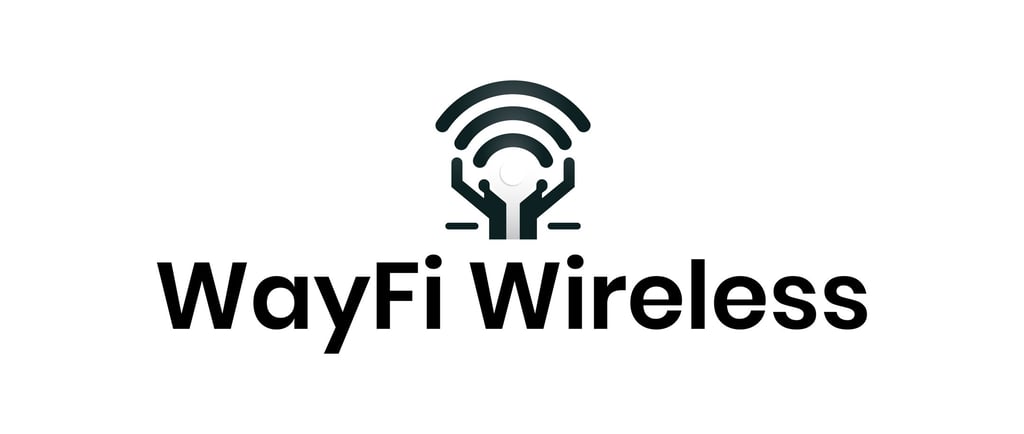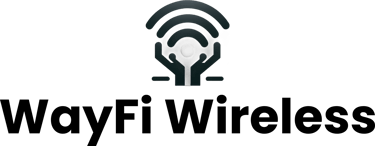📶 Carrier Offload in 2025: How MNOs & MVNOs Are Adopting Wi-Fi & Private 5G
Discover the latest trends in carrier offload as MNOs & MVNOs shift to Wi-Fi, OpenRoaming, and private 5G to reduce congestion & costs. Learn about key players, challenges, and the future of seamless connectivity.
BLOG
WayFi Wireless
2/18/20254 min read


Introduction
Carrier offload has become a critical strategy for mobile network operators (MNOs) and mobile virtual network operators (MVNOs) to manage network congestion, reduce costs, and improve connectivity. As global data consumption surges, particularly with the rise of 5G, IoT, and mobile streaming, offloading traffic to Wi-Fi and private networks has emerged as an essential solution.
Technologies like Passpoint and OpenRoaming have played a pivotal role in enabling seamless transitions between cellular and Wi-Fi networks, while private 5G networks and decentralized wireless (DeWi)/Decentralized Physical Infrastructure Networks (DePIN) solutions are gaining traction as alternative models.
This article explores the current state of carrier offload, the key players driving adoption, and the future outlook for the industry.
What is Carrier Offload?
Carrier offload refers to the process of shifting mobile traffic from cellular networks (4G, 5G) onto alternative networks such as:
Wi-Fi Offload: Redirecting mobile traffic to public or private Wi-Fi networks to alleviate cellular congestion.
Passpoint & OpenRoaming: Technologies that enable automatic, secure Wi-Fi connections, eliminating the need for manual logins.
Private Networks: Enterprise-focused private LTE/5G networks for industrial, IoT, and corporate applications.
Decentralized Wireless (DeWi)/DePIN: Crowdsourced wireless networks where individuals deploy small cell infrastructure.
These solutions not only enhance coverage and reduce costs, but also improve network resilience in urban, rural, and high-traffic areas.
Why is Carrier Offload Gaining Traction?
1. Growing Network Demand & Congestion
Global mobile data traffic is expected to exceed 400 exabytes per month by 2028 (Ericsson Mobility Report). The widespread adoption of 5G, AI-driven applications, and smart devices is significantly increasing the burden on existing cellular infrastructure.
Carrier offload helps mitigate congestion by utilizing underutilized networks such as Wi-Fi and private 5G to handle non-essential traffic.
2. Cost Savings for MNOs and MVNOs
Deploying new cellular infrastructure requires significant investment. Carrier offload reduces network expansion costs, allowing MNOs and MVNOs to serve more users with existing resources.
MVNOs like Comcast (Xfinity Mobile) and Charter (Spectrum Mobile) use Wi-Fi-first offload strategies, leveraging their existing broadband infrastructure to reduce reliance on costly leased spectrum (Light Reading).
3. Seamless Connectivity via OpenRoaming & Passpoint
Technologies like Passpoint and OpenRoaming ensure that users can connect to Wi-Fi networks securely and automatically, without needing to manually select or authenticate networks.
OpenRoaming, spearheaded by the Wireless Broadband Alliance (WBA), enables devices to roam between carrier and Wi-Fi networks without disruptions (Wireless Broadband Alliance).
Passpoint, developed by the Wi-Fi Alliance, simplifies network authentication, enabling carrier-grade security on Wi-Fi (Wi-Fi Alliance).
These innovations enhance user experience by making Wi-Fi connectivity as seamless as cellular connections.
4. Expansion of Private 5G & Enterprise Networks
Large enterprises, industrial IoT (IIoT), and smart city projects are increasingly adopting private LTE/5G networks as an alternative to traditional carrier services.
Amazon Web Services (AWS) and Microsoft Azure now offer private 5G solutions for enterprises (AWS Private 5G).
Manufacturers and logistics companies are deploying private networks to enhance automation and industrial IoT (Enterprise IoT Insights).
Private networks provide greater control, security, and cost efficiencies, reducing the need for reliance on carrier-owned infrastructure.
Key Industry Players in Carrier Offload
1. Mobile Network Operators (MNOs) Leading the Shift
Many leading MNOs are investing heavily in offload solutions to optimize network performance:
AT&T: Operates one of the largest Wi-Fi hotspot networks in the U.S. for offloading LTE/5G traffic (AT&T Business).
T-Mobile US: Supports Wi-Fi calling and offload, particularly for its MVNO partners (T-Mobile).
Orange, Deutsche Telekom, and SK Telecom: Global carriers experimenting with OpenRoaming and Wi-Fi-first strategies (WBA Members).
2. MVNOs & Cable Operators Leveraging Wi-Fi Offload
MVNOs that lease capacity from MNOs are highly dependent on offload strategies to remain competitive:
Comcast (Xfinity Mobile) & Charter (Spectrum Mobile): Shift users to their existing broadband-powered Wi-Fi networks whenever possible.
Google Fi: Uses carrier switching and Wi-Fi offload to optimize costs and coverage (Google Fi).
Helium Mobile: A hybrid MVNO that combines T-Mobile’s network with DeWi infrastructure (Helium Mobile).
3. OpenRoaming & Passpoint Innovators
Several organizations are pioneering seamless connectivity through OpenRoaming and Passpoint adoption:
Cisco, Boingo, and Broadcom: Leading development and deployment of OpenRoaming (Boingo Wireless).
Wireless Broadband Alliance (WBA): Driving OpenRoaming adoption among MNOs and enterprises (WBA OpenRoaming).
Challenges in Carrier Offload Adoption
1. Security & Authentication Risks
Despite advancements in Passpoint and OpenRoaming, security concerns remain. Ensuring strong encryption and authentication is critical for protecting user data in offloaded environments.
2. Network Interoperability
Not all MNOs and MVNOs support OpenRoaming and Passpoint, leading to fragmentation in seamless connectivity. Standardizing network handoff protocols is a key challenge for adoption.
3. Incentives for MNOs to Offload
Some MNOs remain reluctant to aggressively pursue Wi-Fi offload due to potential revenue losses from reduced cellular usage. However, as network congestion grows, offload adoption is expected to increase. And generally speaking, it's a cost saving measure and not a revenue loser.
The Future of Carrier Offload
The carrier offload industry is evolving rapidly, with key trends shaping its future:
Expanded OpenRoaming support: More carriers and Wi-Fi providers will integrate OpenRoaming into their networks.
Growth of private 5G networks: Enterprises will continue investing in dedicated networks for improved security and efficiency.
AI-driven traffic optimization: AI-powered solutions will intelligently manage offload decisions, optimizing between Wi-Fi, 5G, and private networks (AI in Network Optimization).
Carrier offload is transitioning from a cost-cutting measure to a fundamental connectivity strategy, ensuring better performance, lower costs, and greater flexibility for MNOs, MVNOs, and enterprises alike.
Conclusion
The carrier offload market is growing rapidly, driven by MNOs, MVNOs, and enterprise networks adopting Wi-Fi, private 5G, and OpenRoaming technologies. While challenges like network interoperability and security remain, seamless, intelligent offload solutions are becoming the future of mobile connectivity.
WayFi Wireless
Helpful Pages
SUBSCRIBE TO OUR NEWSLETTER
© 2024 - 2025. All rights reserved.
Browser Extentions
TOOLS
